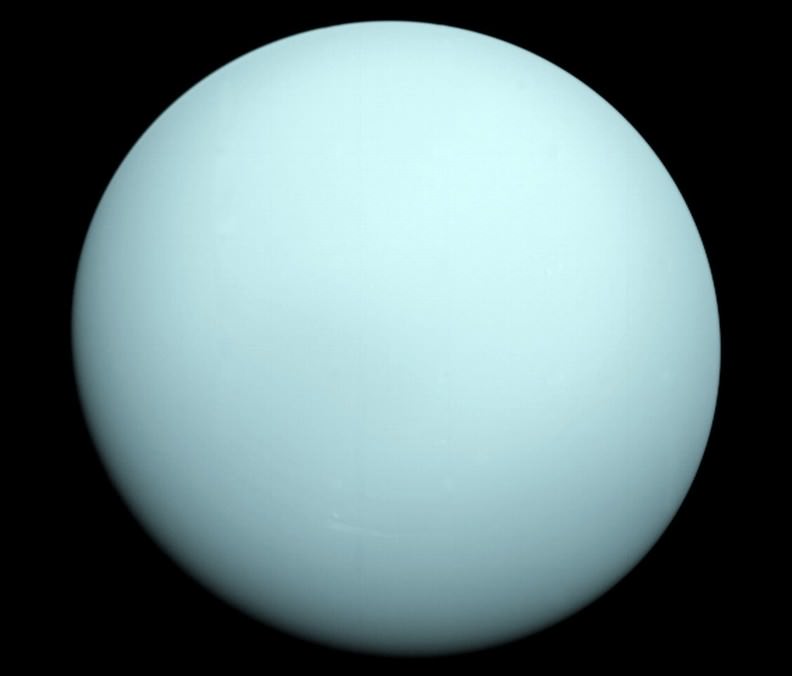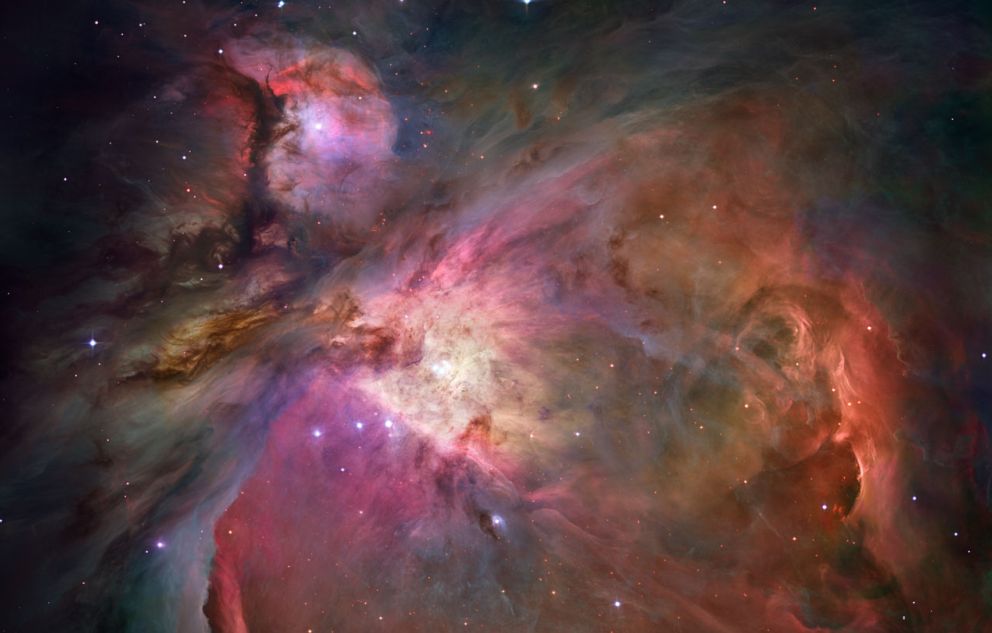
Continue reading

A routine check by the Curiosity science team revealed that breaks have formed in the rover's left middle wheel since they last checked in January of 2017.
Continue reading

You'd think Saturn has all the luck, with its awesome rings. But it turns out, living on a planet with rings has consequences, like an impending global apocalypse.
Continue reading

SpaceX and NASA have identified 4 possible locations for the first Dragon journey to Mars in 2020.
Continue reading

Continue reading

Recently-released images from the Rosetta space probe show how the surface of Comet 67P/Churyumov-Gerasimenko changes over time
Continue reading

Researchers from the Large Hadron Collider beauty experiment (LHCb) have announced the discovery of five new particles, which could shed light on what holds atoms together.
Continue reading

Continue reading

Professor Stephen Hawking has been offered, and has accepted, a trip into sub-orbital space on Richard Branson's Virgin Galactic Spacecraft.
Continue reading

The latest numbers released by the ESA's Space Debris Office indicate that the cloud of orbital debris is getting worse.
Continue reading

KENNEDY SPACE CENTER, FL - SpaceX's tenth contracted resupply mission to the International Space Station came to a safe conclusion with a splashdown of the Dragon spacecraft in the Pacific Ocean Sunday and successfully returned a treasure trove of more than two tons of precious science experiments and research samples from the space station.
Continue reading

Uranus was named in honor of the father of Cronos in Greek mythology, befitting its place in the Solar System beyond Saturn and Jupiter.
Continue reading

Continue reading

Miss out on comet 45P Honda-Mrkos-Pajdušáková? Is Comet 2P Encke too low in the dawn sky for your current latitude? (links) Well the Universe is providing us northerners with another shot at a fine binocular comet, as 41P Tuttle-Giacobini-Kresák glides through Ursa Major this week.
Continue reading

CAPE CANAVERAL AIR FORCE STATION, FL - On the 70th anniversary year commemorating the United States Air Force, a ULA Delta IV rocket put on a daunting display of nighttime rocket fire power shortly after sunset Saturday, March 19 - powering a high speed military communications satellite to orbit that will significantly enhance the targeting firepower of forces in the field; and was funded in collaboration with America's strategic allies.
Continue reading

The Hubble has looked inside the Orion Nebula to witness a family of stars breaking up.
Continue reading

If a new definition of planet is adopted by the International Astronomical Union, our Solar System could be home to more than 110 planets.
Continue reading

CAPE CANAVERAL AIR FORCE STATION, FL - As sunset dawns on the venerable Delta rocket program, the sole Delta slated to launch from the Cape this year is set to dazzle at sunset tonight, Saturday, March 18.
Continue reading

Continue reading

Join Fraser Cain at Forbidden Brewing to talk about the TRAPPIST 1 system.
Continue reading

NASA's ground breaking twins study is in the all-important integration phase.
Continue reading

Continue reading

The Cassini probe recently snapped its last up-close imagines of Saturn's moon Mimas, which were used to create some impressive mosaic pictures of its pockmarked surface.
Continue reading

The private aerospace company Zero2Infinity reached a milestone this month with the successful test of their Bloostar launch system.
Continue reading

KENNEDY SPACE CENTER, FL - Under stellar moonlit Florida skies, a private SpaceX Falcon 9 took flight overnight and flawlessly delivered the commercial EchoStar 23 television satellite to geosynchronous orbit after high winds delayed the rockets roar to orbit by two days from Tuesday. Breaking News: Check back for updates
Continue reading

The Russian federal space agency (Roscosmos) has announced that it is seeking new recruits to become the next-generation of cosmonauts.
Continue reading

In addition to be the second closet planet to our Sun, Venus also has the most circular orbit - varying between 0.718 to 0728 AUs from the Sun.
Continue reading

KENNEDY SPACE CENTER, FL - High winds halted SpaceX's early morning attempt to launch a legless Falcon 9 rocket and the EchoStar XXIII commercial communications satellite soon after midnight Tuesday, Mar. 14, from the Florida Space Coast amidst on and off rain showers and heavy cloud cover crisscrossing central Florida all afternoon Monday, Mar. 13 and into the overnight hours.
Continue reading

NASA recently announced the release of raw, uncalibrated data of the TRAPPIST-1 star system, which was collected by the Kepler K2 mission,
Continue reading

Continue reading

Canada's spaceport will be built by Maritime Launch Services near Canso, Nova Scotia.
Continue reading

The National Aeronautics and Space Administration Transition Authorization Act of 2017 has set aside funding for NASA's proposed mission to Mars for the coming year.
Continue reading

With so much attention on Mars, it's easy to forget there's a whole other Earth-sized planet nearby, worthy of exploration: Venus. And the Soviets worked really hard to tell us what it's like down on the surface of Venus with their Venera program.
Continue reading

Nanosatellites and CubeSats may change the face of space exploration.
Continue reading

A recent presentation made at the NASA Planetary Science Vision 2050 Workshop outlined how the study of magnetic fields could play a pivotal role in the exploration of our Solar System and beyond.
Continue reading

KENNEDY SPACE CENTER, FL - It's March Madness for Space fans worldwide! A triple header of space spectaculars starts overnight with a SpaceX Falcon 9 launching in the wee hours of Tuesday, March 14 from the Florida Space Coast.
Continue reading

After examining the strange object known as CFBDSIR 2149-0403, a team has determined that it is either a solitary planetary-mass object or a high-metallicity brown dwarf.
Continue reading

Continue reading

Located in the Auriga constellation, roughly 4500 light years from Earth, is the open star cluster known as Messier 37.
Continue reading

Continue reading

Continue reading

At NASA's Planetary Science Vision 2050 Workshop, presenters showed various concepts for exploring Saturn's moon Titan with aerial platforms.
Continue reading

See Saturn's "UFO moon" like you've never seen it before.
Continue reading

Venus doesn't attract as much attention as other worlds in our Solar System and beyond. But maybe it should.
Continue reading

Continue reading

Continue reading

Miss out on Comet 45/P Honda-Mrkos-Padadušáková last month? We'll admit, it was fairly underwhelming in binoculars... but fear not, there's several other binocular comets in the pipeline for 2017.
Continue reading

SPACE VIEW PARK/KENNEDY SPACE CENTER, FL - After a pair of back to back postponements presumably due to technical gremlins, the third time proved to be the charm at last as SpaceX engineers carried out a successful engine test of the Falcon 9 first stage this evening (Mar. 9) atop historic pad 39 at the Kennedy Space Center in Florida.
Continue reading

Could Fast Radio Bursts from distant sources be artifacts of an alien propulsion system?
Continue reading

At NASA's Planetary Science Vision 2050 Workshop, which took place last week, some interesting concepts for terraforming Mars and space habitats were presented.
Continue reading


















































